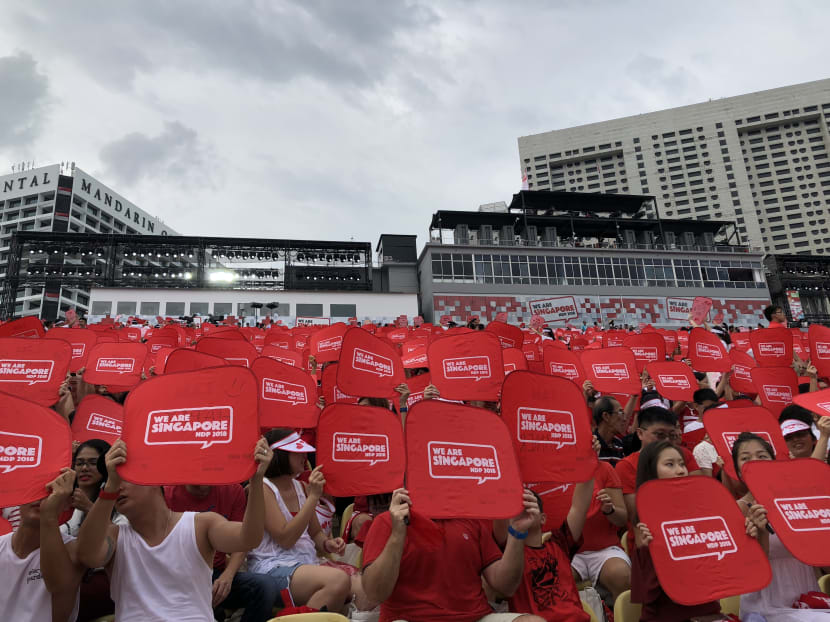Rethinking Singapore’s approach to diversity and social inclusion
In order to maintain that global reputation as a city-state that is welcoming of foreigners, we must not simply continue to provide economic opportunities for potential migrants and immigrants, but also build a social and cultural landscape that is more inclusive of difference and recognises the inequalities that these differences may engender.

To maintain a global reputation as a city-state that is welcoming of foreigners, Singapore must build a social and cultural landscape that is more inclusive of difference and recognises the inequalities that these differences may engender, says the author.
In a context where far right political parties and movements are stoking xenophobic sentiments in Europe and the United States, Singapore remains a bastion for liberal mobilities and cultural tolerance.
This is one of the most important reasons why Singapore has been able to attract not just the talented and highly skilled, but also those seeking to escape economic hardship and discrimination because of their gender, race, or religious affiliation.
In order to maintain that global reputation as a city-state that is welcoming of foreigners, we must not simply continue to provide economic opportunities for potential migrants and immigrants, but also build a social and cultural landscape that is more inclusive of difference and recognises the inequalities that these differences may engender.
With rising levels of economic inequality, combined with the changing cultural demographics of the citizen population, there is a need to rethink approaches to diversity and the ways in which social inclusion is configured within our city-state.
Post-independence, the Chinese, Malay, Indian, Other (CMIO) categorisations have defined much of Singapore’s approach to migration and diversity. This recognition of different ethnic communities and the intention to provide equitable resources through those categorisations proved largely successful in creating a nation tolerant to diversity.
However, the effects of these CMIO policies can also be felt in more visceral terms - Singaporeans now see themselves and others in prescribed racial terms. This means that difference rather than commonality as co-citizens is what is foremost in this politics of recognition.
Those who fall outside or elide such racialised categorisations may be left out of the system by which the state recognises cultural traditions or disburses social support.
This mode of seeing people within the nation by whether they are racial and cultural strangers or affiliates also affects how temporary migrants and immigrants are perceived.
Singapore’s exclusion of low-wage migrant labour from a route to attaining permanent residency or citizenship does not look set to change.
Despite their permanently temporary nature, low-wage migrants often stay for long periods in Singapore, taking on circular routes of migration that entail a regular back and forth between home and host countries.
Many who work in Singapore for decades describe strong feelings of belonging and emotional attachment to a nation that has been a home for much of their adult lives. How can we acknowledge the contributions of these temporary migrants to our nation?
Ground sentiment with regard to low-wage migrants is fast changing.
Thanks to the work of non-government organisations (NGOs) that cater to the welfare of migrant workers and generate coverage of their lives in the local media, there is now far more sympathy for these men and women than there was even a decade ago.
There is greater acknowledgement of the important work that they do in building and maintaining the material fabric of our city and in taking care of our children and senior citizens.
In response to these shifting mindsets, we must explore ways in which we can enhance how these men and women can be made to feel included in the social fabric of Singapore.
This should not be left only to NGOs or individual employers. The judicial system and policymakers should take on the task of changing the social structures that pertain to temporary migrant work.
Penalties for abuse of migrants, whether physical, verbal, or in terms of the late or non-payment of wages for instance, should be far harsher and better enforced.
Sending a signal that these crimes and practices are unacceptable assures temporary migrants that they are valued as equal, contributing members of our society.
In the past 20 years, Singapore has seen a very different wave of immigration compared to the movements of the pre-war years.
Our total population has grown by almost a fifth, and much of this is due to the expansion of immigration and naturalisation to augment the effects of ultra-low fertility rates.
These immigrants have been overwhelmingly from other Asian countries, although there are rising numbers of Singaporeans who are not of Asian ethnicity, and who do not fit easily into the CMIO categorisations.
What is of particular significance is that many (im)migrants who have been presumed to fit within the Chinese and Indian labels, being of East Asian or South Asian ancestry, are without the same cultural and national histories of second, third and later generation Singaporeans.
What do these changing demographics mean for Singapore’s national identity?
The inclusion of Indians and Chinese born outside Singapore within the same labels that define Singapore-born individuals of Chinese and Indian ethnicity have created some tensions within these two communities.
This needs to be addressed better by integration efforts that do not take affinity within groups as a priori. This means that we should not assume that just because people share similar phenotype characteristics, or even a shared ancestry, that they will share other characteristics, and act as a group.
ENCOURAGING INTEGRATION
Singapore has been highly successful in attracting highly educated Asians who see Singapore as a happy middle ground between East and West.
This group with high cultural capital often finds the city of Singapore an easy place to adapt to because of its Asian character.
However, in many cases, this has not entailed meaningful interaction with Singaporeans, as they maintain exclusive social networks and often self-segregate even in residential areas.
This mode of living “parallel lives” — side by side but without meaningful interaction — is a sign of the increasingly divided society that Singapore is becoming, along lines of socio-economic status, not race.
We should not ignore changing demographic realities on the ground.
One of the most significant trends that is emerging is the intersection of socio-economic status with immigration status, where highly-skilled employment pass holders and low-wage domestic, construction and service sector workers lead very separate lives from middle-class Singaporeans.
Attempts should be made for greater grassroots reach into condominiums and private developments where there is evidence of immigrant communities self-segregating.
More effort should also be made to ensure neighbourhoods are composed of a mix of housing types.
In addition, organic, bottom-up expressions of identity that are inclusive and bind people across racial and class differences should also be encouraged.
The politics of recognition that the post-independence Government adopted, which ensured the representation of the four major ethnic groups in Singapore across many spheres, has worked well on many counts.
We have a largely bilingual population, there is a high level of residential desegregation and Singaporeans, on most counts, are tolerant of difference in everyday life.
However, the CMIO system of dividing and catering to the welfare of the population along lines of race, seems to have reached the extent of its utility.
The divisions between socio-economic class and between local and foreigner/new immigrant now seem to have superseded the divisions once thought to be the most insurmountable – those between the different races.
Perhaps it is time to move towards a post-recognition politics; one that is inclusive and that resists labelling or categorisation.
This is almost an imperative given that one out of every four marriages here is between a Singaporean and a non-Singaporean. Current and future generations will comprise a significant proportion of bicultural individuals who will not easily fit into ethnic labels or even national categories.
These shifts in thinking about diversity should come together with a widening of perspective on who needs to be included within the nation.
Together with efforts to integrate immigrants, we should also consider how we can acknowledge the labour and contributions of temporary migrants to the nation.
After all, our collective dependence on migrants is not diminishing. In fact, with Singaporeans increasingly shifting to white-collar work, our reliance on a migrant pool doing blue collar jobs is growing.
Given these circumstances, it would be of mutual benefit if we develop better welfare mechanisms and frameworks to deal with issues that low-wage migrants regularly face such as overwork and lack of representation against errant employers.
Temporary migrants should also be integrated into mainstream Singaporean society through their inclusion in neighbourhood level activities, and the labour protections and rights that Singaporeans and middle-class workers enjoy should be extended to them.
Tangibly, this could mean, for example, extending to foreign domestic workers the benefits and protection prescribed under the Employment Act.
If we want multiracial cultural diversity to be one of our greatest strengths, Singapore’s leaders should rethink the traditional ways in which diversity has been defined and managed, taking into account the issues arising from migration that have been discussed. It is time for change.
ABOUT THE AUTHOR:
Laavanya Kathiravelu is an Assistant Professor of Sociology at the College of Humanities, Arts, & Social Sciences, Nanyang Technological University. This is adapted from a piece which first appeared in the latest volume of Commentary, a journal from the National University of Singapore Society.









